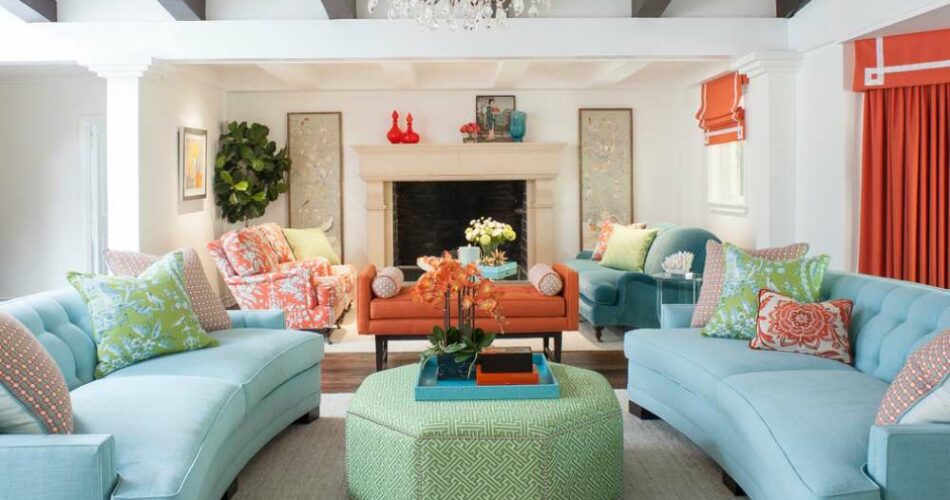Imagine walking into a living room where time stands still — transitional living room decor is that gently whispered secret between a love affair of classic charm and modern flair. Here, where every cushioned armrest and sunlit corner tells a story, comfort meets sophistication in a timeless partnership.
Dive in, we’re demystifying the seamless dance of eclectic home accessories with the grounded, neutral color palettes that define this unique style.
With a few well-aimed strategies up our sleeve, we’ll transform a mundane space into a thoughtful symphony of design that speaks both of history and tomorrow.
By the close of this read — an artful journey through layers of texture, balanced layouts, and subtle design principles — expect to wield the power to curate a living space that not only evolves with the times but also anchors itself in the evergreen beauty of transitional design.
Prepare to unravel the versatility of transitional furniture styles and how they can elevate your living quarters into the epitome of elegant comfort.
Transitional Living Room Decor
Cozy Bohemian Vibes
 Image source: 1st Impressions Design, LLC
Image source: 1st Impressions Design, LLC
Bring in that boho vibe by adding lush greenery and colorful patterns! Mix it up with unique finds from flea markets or thrift stores, giving your living room that eclectic, relaxed feel. Don’t forget to include some cozy floor cushions or poufs for lounging.
Rustic Retreat
 Image source: Kasper Custom Remodeling, LLC
Image source: Kasper Custom Remodeling, LLC
Create a warm, inviting space by incorporating reclaimed wood furniture, natural textures, and soft, neutral colors. Use a large, cozy rug to tie the room together and give it that perfect, rustic atmosphere.
Contemporary Haven
 Image source: DLT Interiors-Debbie Travin
Image source: DLT Interiors-Debbie Travin
Opt for sleek lines, minimalist furniture, and bold accents to create a modern and sophisticated living room. Keep the color palette neutral, but feel free to experiment with pops of color in your decor to create visual interest.
Classic Charm
 Image source: Urbanology Designs
Image source: Urbanology Designs
Channel your inner classic designer by focusing on timeless elements like elegant lighting, tufted furniture, and architectural details. Choose neutral colors and add in some traditional prints, like florals or stripes, for a touch of charm.
Industrial Loft
Capture the essence of city living with exposed brick walls, metal accents, and leather furniture. Add in some unique, industrialstyle lighting to really make a statement. Don’t be afraid to mix and match different textures and materials to create an urban oasis.
Coastal Breeze
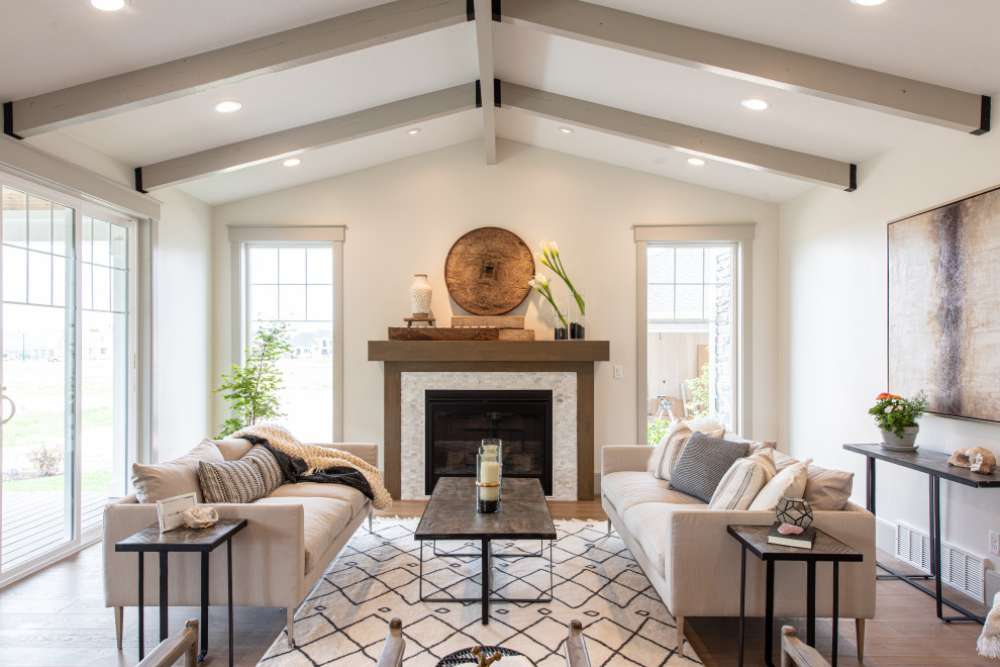 Image source: Green Tech Construction
Image source: Green Tech Construction
Incorporate light, airy colors, natural fibers, and beach-inspired accents to create a calming, coastal-inspired living room. Think linen curtains, jute rugs, and weathered wood furniture to achieve that perfect seaside retreat.
Mid-Century Modern
 Image source: Jodi Fleming Design
Image source: Jodi Fleming Design
Embrace the iconic style of the 1950s and 1960s with clean lines, geometric shapes, and functional furniture. Include some statement pieces like a bold, curved sofa or a vintage bar cart to really make your living room stand out.
Vintage Glam
Create a luxurious living room by incorporating velvet upholstery, gilded mirrors, and crystal chandeliers. Choose a rich color palette, like deep blues or jewel tones, to add to the opulent atmosphere. Don’t forget to include a few statement art pieces for a touch of drama.
Eclectic Wonderland
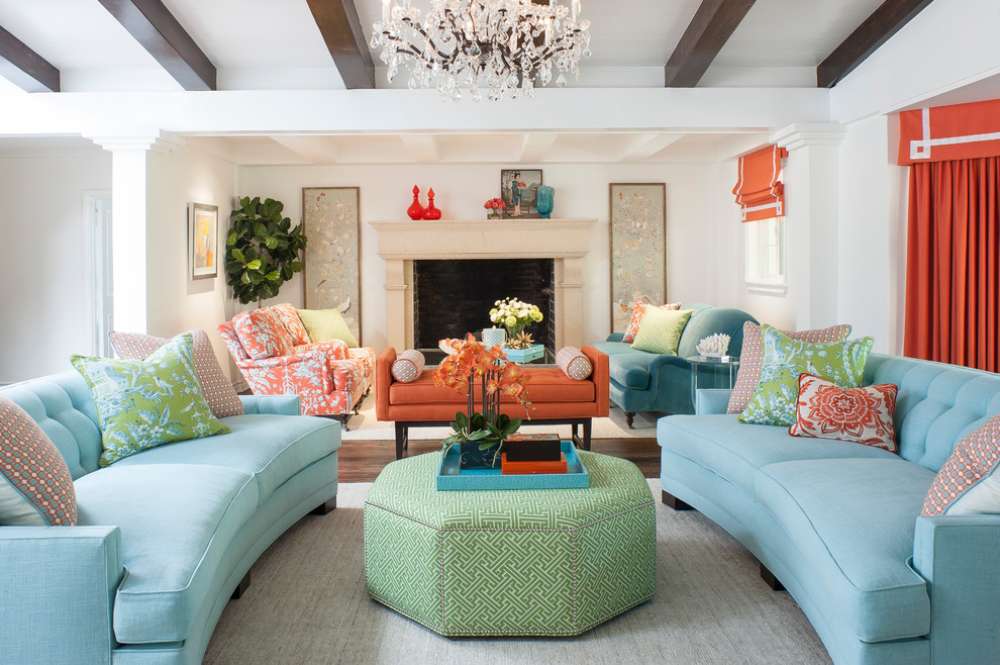 Image source: Grace Home Furnishings
Image source: Grace Home Furnishings
Show off your personality by mixing and matching bold colors, unique patterns, and unexpected textures. Go wild with your decor, but keep your furniture and overall layout grounded for a balanced and visually intriguing living room.
Artful Abode
 Image source: Allen Construction
Image source: Allen Construction
Turn your living room into an art gallery by showcasing your favorite pieces, whether they’re paintings, sculptures, or photographs. Opt for simple, modern furniture to let the artwork take center stage, and don’t forget to include some statement lighting to really set the mood.
Worldly Wanderer
Display your love of travel by incorporating global-inspired patterns, rich textures, and unique artifacts from around the world. Choose furniture with an ethnic flair and add plenty of pillows and throws to create a cozy, well-traveled vibe.
Scandinavian Simplicity
Embrace the minimalist, functional aesthetic of Scandinavian design by choosing clean lines, light wood tones, and cozy textiles. Stick to a neutral color palette and add in some greenery to create a serene, inviting living room.
Nature-Inspired Sanctuary
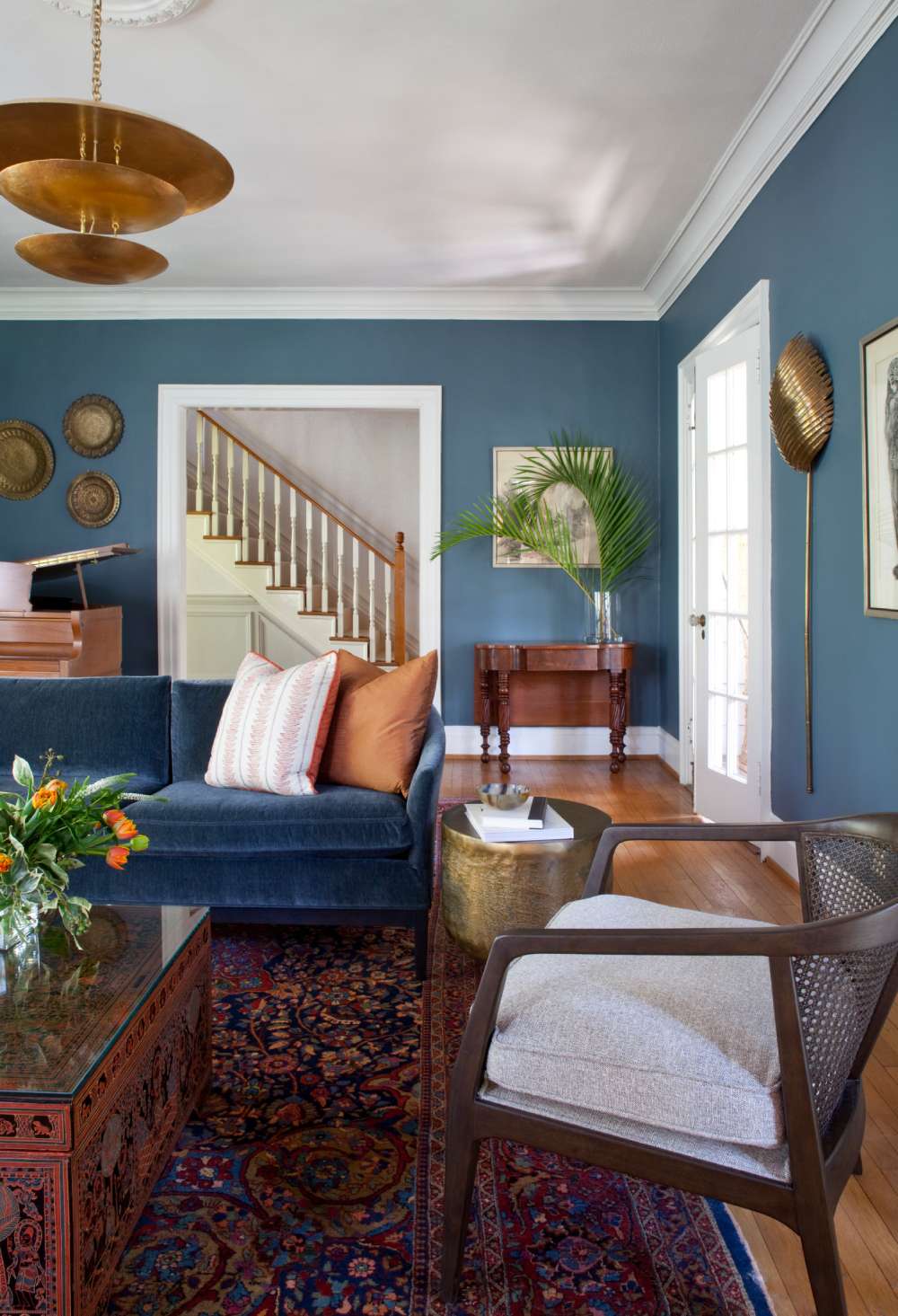
Image source: Little Black Fox
Bring the outdoors in by incorporating natural materials, organic shapes, and earthy tones. Think wood, stone, and plenty of lush greenery to create a calming, nature-inspired space where you can unwind after a long day.
Bold and Bright
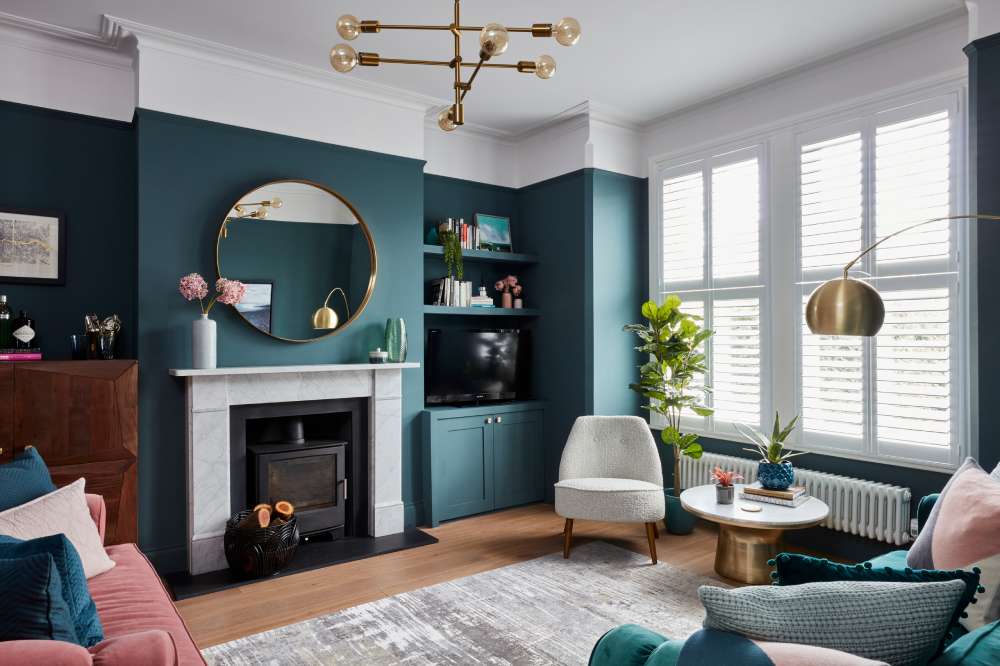 Image source: Clare Elise Interiors
Image source: Clare Elise Interiors
Transform your living room into a vibrant, cheerful space by embracing bold colors, eye-catching patterns, and quirky accents. Don’t be afraid to mix and match different styles and textures, but keep your furniture and layout clean and modern to prevent visual overload.
Playful Pastels
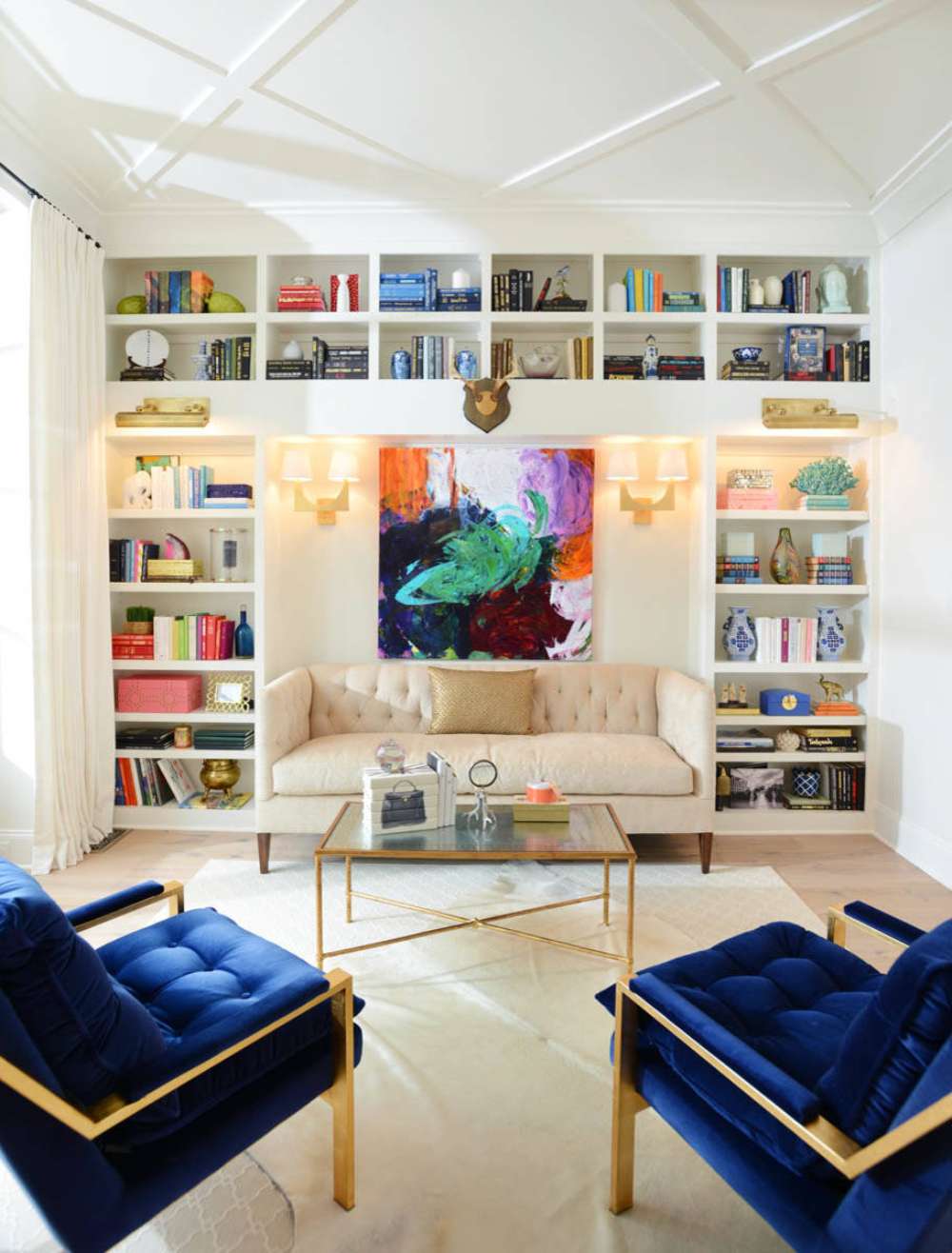 Image source: Lori Paranjape
Image source: Lori Paranjape
Opt for a soft, soothing palette of pastel hues, delicate patterns, and whimsical accents to create a dreamy living room. Incorporate plush, comfortable furniture and plenty of cozy throws to make the space feel welcoming and inviting.
Farmhouse Chic
 Image source: Christen Ales Interior Design
Image source: Christen Ales Interior Design
Achieve that cozy, down-home feel by incorporating rustic wood furniture, shiplap walls, and vintage-inspired accents. Use a muted color palette and natural textiles like cotton and linen to create a comfortable, farmhouse-inspired living room.
Dark and Dramatic
 Image source: Ann Lowengart Interiors
Image source: Ann Lowengart Interiors
Make a bold statement by embracing dark colors, rich textures, and dramatic lighting. Opt for deep hues like navy, charcoal, or even black, and pair them with luxe materials like velvet and metallics to create a sophisticated, moody space.
Minimalist Zen
Embrace the principles of Japanese design by choosing simple, low-profile furniture, clean lines, and natural materials. Keep your color palette neutral and focus on creating a sense of balance and harmony throughout the room.
French Country Elegance
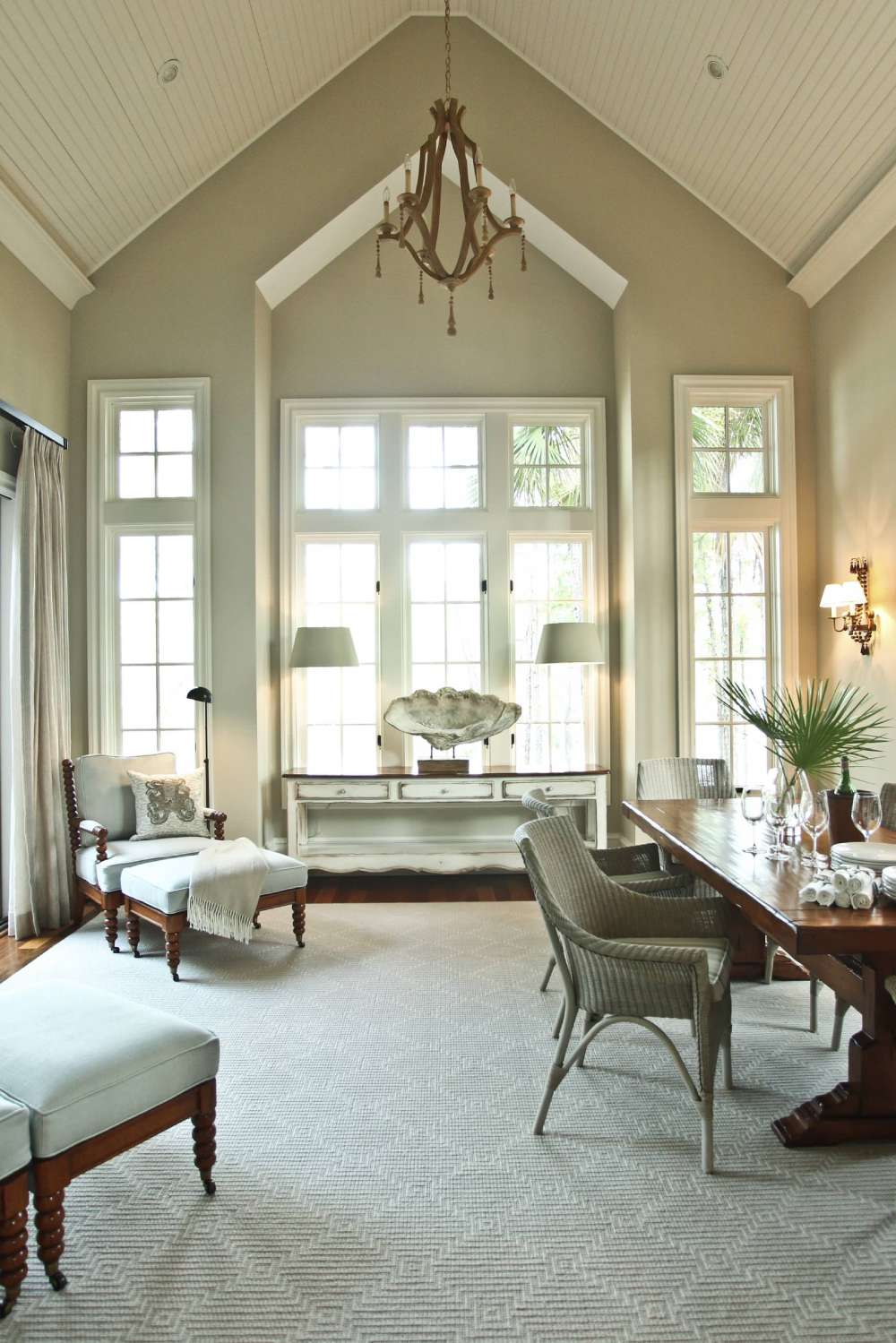 Image source: Margaret Donaldson Interiors
Image source: Margaret Donaldson Interiors
Channel the charm of the French countryside by incorporating antique furniture, ornate details, and floral patterns. Use soft, muted colors and plenty of cozy textiles to create a warm, inviting atmosphere that’s perfect for relaxing with a good book or enjoying an intimate conversation.
Maximalist Extravaganza
Go all out by embracing bold patterns, rich colors, and opulent textures. Mix and match different styles, periods, and materials to create a living room that truly reflects your personality and makes a statement. Just remember to keep the layout and furniture streamlined to prevent the space from feeling too cluttered.
FAQ On Transitional Living Room Decor
What is Transitional Living Room Decor?
It’s like a handshake between generations—you’ve got the classic comfort from grandma’s house mixing with sleek lines from modern design. We’re not leaning too far into the past or diving headfirst into the future.
It’s the Goldilocks zone: just right. Defined by its timeless style, it adapts and fits almost anywhere.
How Do You Achieve a Transitional Style in a Living Room?
Start with a neutral color palette to keep it grounded. Throw in a blend of traditional and modern furniture, think clean lines paired with plush textiles. It’s all about balance.
Accessories, keep them simple yet impactful. Accent lighting, artworks and a variety of textures will tie it all together beautifully.
What Colors Work Best for Transitional Decor?
Keep it understated with neutral colors: beiges, grays, whites, and taupes are your best pals here. They create a perfect backdrop for any transitional furniture styles and accessories to stand out. Want a splash of color? Go for muted tones to maintain that elegant vibe.
What Types of Furniture Work Well in Transitional Living Rooms?
Opt for transitional furniture styles that exude comfort yet stay chic—sofas with clean lines and maybe a button-tufted detail.
Furniture with minimal ornamentation but exceptional craftsmanship can bridge the divide between eras. Look for versatile pieces that could slip into any timeline without causing a stir.
Can Transitional Decor Incorporate Patterns and Textures?
Absolutely, it’s all about the mixture of textures. Patterns? Keep them subtle. A striped throw pillow or a geometric rug can add depth without the drama. Textures like leather, linen, and velvet add tactile diversity that’s visually comforting and keeps the eye intrigued.
How Does One Accessorize a Transitional Living Room?
Think timeless decorative elements — classy lamps, vases with clean lines, maybe a mirror with a simple yet handsome frame.
Art should be neutral in palate but bold in its simplicity. It’s not about clutter, it’s about choosing the right accents that speak softly but carry a big stick.
What Lighting is Ideal for a Transitional Living Room?
Good lighting is crucial. Go for pieces that are sleek but warmly illuminating, like a stylish floor lamp or recessed lighting that washes over the room evenly. You can’t go wrong with an understated chandelier that adds a bit of glamour without stealing the spotlight.
How Do You Mix Transitional With Other Design Styles?
It’s the peacemaker of design styles. Transitional gets along with everyone. Want to mix it with Scandinavian elements? Those clean lines will jive perfectly.
Thinking about a Mid-Century Modern piece? That simplicity is a match made in heaven. It’s all about coexistence without competition.
What Is the Difference Between Transitional and Contemporary Design?
Contemporary design is like tomorrow’s headline – always updated. It’s edgier, bolder. Now, transitional—it weaves threads from history into a fabric that’s enduring.
It’s the bridge between the tried, true traditional, and the crisp, minimal contemporary. Both can cohabitate, but transitional brings that warm, familiar hug.
What Mistakes Should Be Avoided in Transitional Decor?
Don’t overdo it. Like a cocktail, it needs the right mix—too much tradition can age a room, while a surplus of modern may feel stark. Keep a close watch on balance. It’s about harmony, gentle contrasts, and neutral backdrops that let you weave an ageless, cohesive look.
Conclusion
We’ve journeyed through the ins and outs of transitional living room decor, navigating the sweet spot where classic comfort fist bumps modern minimalism. Armed with insights—those neutral color palettes as canvases, the sophisticated accents that whisper elegance, and transitional furniture styles that tell timeless stories—we’re at an end that feels a lot like a new beginning.
- Your takeaway?
- A cheat sheet for crafting a space that evolves yet remains anchored.
You’re now the captain of a ship that sails smoothly between the shores of traditional warmth and contemporary excitement. Remember, less is more, balance is key, and textures? They’re your secret sauce.
So, roll up those sleeves. Let’s transform that living room. Make it a sanctuary that’s both a nod to the past and a wink at the future. Here’s to creating a comfortable yet chic decor that stands the test of time!
If you liked this article about transitional living room decor, you should check out this article about living room design ideas.
There are also similar articles discussing contemporary living room decor, eclectic living room decor, elegant living room decor, and vintage living room decor.
And let’s not forget about articles on coastal living room decor, neutral living room decor, masculine living room decor, and zen living room decor.

